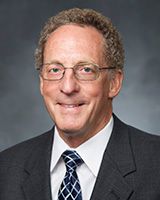The Design, Operation, and Performance Demands of Portable and “Green” LC Instrumentation
This article describes advances in portable and sustainable high performance liquid chromatography (HPLC) systems.
zphoto83/stock.adobe.com

This article describes advances in portable and sustainable high performance liquid chromatography (HPLC) systems.
Interest in reducing the size of liquid chromatography (LC) instruments is currently growing for a number of reasons, each depending on a specific challenge or opportunity. For example, chemical reaction monitoring for optimizing the reaction conditions during synthesis of new drugs in the pharmaceutical industry or new organic chemicals in university research laboratories would benefit from a small LC instrument that could be easily placed in a hood and very close to the reaction vessel. Furthermore, small-diameter columns and low mobileâphase flow rates, which are typical for small LC systems, would further benefit chemical reaction monitoring because only very small samples would need to be withdrawn from the reaction vessel during repetitive analysis, reducing the possibility of any change in conditions that could occur by reducing the volume of reactants during the reaction period.
Interfacing an LC system to another instrument, such as an autosampler or a mass spectrometer, is another example application that would greatly benefit from using a small LC instrument, because the LC instrument could be placed very close to the ancillary instrumentation. In the case of LC with mass spectrometry detection (LC–MS), smallâdiameter columns and low mobile-phase flow rates facilitate the interfacing because the liquid flow exiting the LC column and entering the MS instrument are much better matched for optimum performance without the need for flow splitting. In Figure 1, the LC column eluent first passed through the on-column UV-absorption detector and continued to the MS.

Conventional LC instruments that use 1.0–4.6 mm i.d. columns require relatively large solvent reservoirs to support the approximately 0.1–2 mL/min LC mobile-phase flow rates. The use of such large solvent reservoirs is cumbersome when moving an LC instrument to different locations (such as when transporting to the laboratory or other analysis site) and in terms of other aspects of solvent handling (such as storing solvents, safely disposing waste, and minimizing human exposure during those steps). By enabling significantly reduced consumption of valuable chemical resources and reduced disposal of waste, small LC systems can advance the growing trend to move to “greener” analytical techniques.
From an economic viewpoint, a small LC instrument would greatly reduce the cost of solvent use (for both purchase and disposal). Comparing solvent-use costs for a 4.6-mm i.d. column and a 0.15-mm i.d. column, for which the latter would consume approximately a thousand times less solvent, the estimated solvent-use costs would be approximately $7000 and $7 for one year of operation and 36 runs per day, respectively, which differ by approximately a thousand times, as expected. For an analytical laboratory that operates 100 LC instruments, the comparative costs would become $700 000/year versus. $700/year, a major cost in savings for the small-diameter column. For comparison, the costs for 2.1-mm and 1.0-mm i.d. columns would be $140 000 and $32 000/year, respectively, which are still significantly more than $700/year.
For the reasons described previously, our group has been involved in the development of a small, portable LC system. This effort began in 2011 in the research laboratories at Brigham Young University, in Utah, USA, in collaboration with Stan Stearns and engineers at VICI Valco, in Texas, USA, to develop an ultrahigh-pressure nanoflow pumping system (1–6). The technology was subsequently licensed. The design criteria for this LC instrument included small size, light weight, low mobile-phase consumption, low power usage, high chromatographic performance, easy operation, and good robustness. The resulting system is a hand-portable LC that has a small footprint (approximately 30 × 20 × 20 cm), weighs approximately 8 kg (including a rechargeable LiâFeâPO4 battery), produces consistent 0.5–10 μL/min flow rates at pressures up to 689 bar (10 000 psi), utilizes on-column UV-absorption detection with light-emitting diode (LED) light sources, and is very easy to operate. The system has a cartridge that houses the capillary columns and detectors. Several column-detector configurations can be selected from various length columns (typically, 5-, 10-, and 25 cm, all 150-μm internal diameter) and one or two UV-absorbance detectors, including simply one column followed by one detector, or one column followed by two tandem detectors of different wavelengths, or a combination of two columns and two detectors where one column packed with one stationary phase is followed by a detector of a specific wavelength, and a second column packed with a different stationary phase is followed by a second detector of a different wavelength, all in series. The latter configuration can provide two complementary retention times and complementary UV absorbance values that can be used for near positive target compound identification. Alternatively, the end of the column can be extended out of the back of the cartridge for direct interfacing to a variable wavelength UVâabsorbance detector or to a mass spectrometer for identification of unknown compounds.
One challenge in using columns with very small internal diameters is preventing tiny particles in the sample or mobile phase from plugging the extremely small internal diameter sampling valve opening or the transfer line tubing that connects the injection valve to the column. For this reason, more care is required than for conventional LC systems to filter samples and mobile phases (for example, using a 0.2-μm pore-diameter filter) before they are introduced into the LC system. Furthermore, because UV-absorption detection is accomplished onâcolumn immediately after the stationary phase packing in a 150-μm-i.d. PTFE-coated capillary column, it is extremely important to eliminate as much detector noise as possible, which can originate from a variety of sources. The laboratory prototype nano- to micro- flow LC system gave a UV-absorption detection limit of 25 nM (7.6 ppb) for sodium anthraquinone-2-sulfonate when the detector was placed a short distance away from the pumping system and electronics, and was well shielded. Because the detector is placed inside a cartridge and near the electronic board stack in the commercial system, it has been more challenging to reduce the background noise to the same level as for the prototype detector. Therefore, the detection limits are higher, which currently restricts the use of this system for some applications that require UV-absorption detection of extremely low concentrations. We are currently working on identifying and minimizing these elusive sources of noise and increasing the detection path length to improve the detection limits.
References
- S. Sharma, A. Plistil, R.S. Simpson, K. Liu, P.B. Farnsworth, S.D. Stearns, and M.L. Lee, J. Chromatogr. A.1327, 80–89 (2014).
- P. Aggarwal, K. Liu, S. Sharma, J.S. Lawson, H.D. Tolley, and M.L. Lee, J. Chromatogr. A.1380, 38–44 (2015).
- S. Sharma, H.D. Tolley, P.B. Farnsworth, and M.L. Lee, Anal. Chem. 87, 1381–1386 (2015).
- S. Sharma, A. Plistil, H.E. Barnett, H.D. Tolley, P.B. Farnsworth, S.D. Stearns, and M.L. Lee, Anal. Chem.87, 10457–10461 (2015).
- X. Zhao, X. Xie, S. Sharma, L.T. Tolley, A. Plistil, H.E. Barnett, M.P. Brisbin, A.C. Swensen, J.C. Price, P.B. Farnsworth, H.D. Tolley, S.D. Stearns, and M.L. Lee, Anal. Chem.89, 807–812 (2017).
- X. Xie, L.T. Tolley, T.X. Truong H.D. Tolley, P.B. Farnsworth, and M.L. Lee, J. Chromatogr. A. 1523, 242–247 (2017).
- Milton L. Lee is the Chief Science Officer at Axcend and the Emeritus H. Tracy Hall Professor of Chemistry at Brigham Young University, Utah, USA.

Milton L. Lee is the Chief Science Officer at Axcend and the Emeritus H. Tracy Hall Professor of Chemistry at Brigham Young University, Utah, USA.
E-mail:mllee@chem.byu.eduWebsite:www.byu.edu

Study Explores Thin-Film Extraction of Biogenic Amines via HPLC-MS/MS
March 27th 2025Scientists from Tabriz University and the University of Tabriz explored cellulose acetate-UiO-66-COOH as an affordable coating sorbent for thin film extraction of biogenic amines from cheese and alcohol-free beverages using HPLC-MS/MS.
New Study Investigates Optimizing Extra-Column Band Broadening in Micro-flow Capillary LC
March 12th 2025Shimadzu Corporation and Vrije Universiteit Brussel researchers recently investigated how extra-column band broadening (ECBB) can be optimized in micro-flow capillary liquid chromatography.








